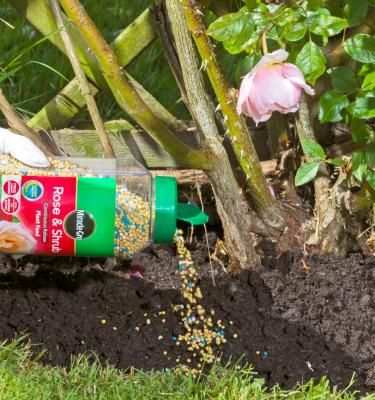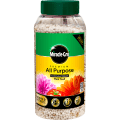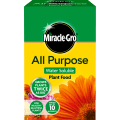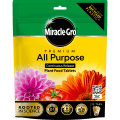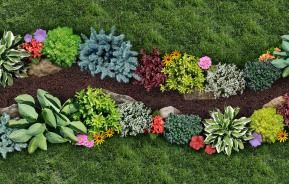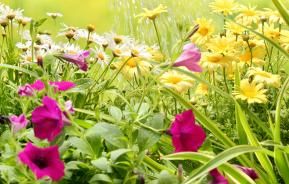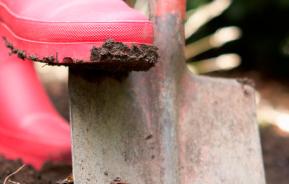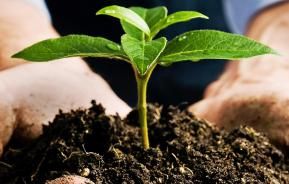There are numerous ways to apply plant feeds or fertilisers. Each has its advantages and can be used in different circumstances. Liquid feeds work instantly and are a good pick me up, but need to be applied regularly - usually every 10-14 days when plants are growing. Granular feeds start to work pretty quickly and go on feeding for many weeks.
Controlled-release feeds provide a steady release of plant nutrients from one application as and when the plants need it for several months. All plant foods can only be absorbed by the roots when there is sufficient moisture present in the soil. If the soil or compost is dry, apply water before feeding with either solid or liquid plant foods.
Apply the right amount, don’t add extra for luck. The application rate has been worked out to give maximum benefits. Overdosing is wasteful and could harm your plants.
By hose-end feeder
Soluble plant foods can be watered over large areas easily and quickly with modern devices such as the feeder. The plant food is dissolved in the container and gradually picked up and further diluted by the water jetting through the hose. The feeder comes with a sachet of soluble plant food when you buy it, simply pour it into the feeder jar, fill with water and attach to the feeder head, off you go. You can also use a system of concentrated liquid plant foods, that are simply a bottle you screw into a feeding head and the water pressure of your hose accurately dilutes the feed.
By hand
Check the recommended rate before you start. Weigh the amount in your own ‘handful’ on kitchen scales to see how this compares with the recommended application rate. Spread the plant food over the prescribed area and then rake in. Wash your hands after application.
Through a watering can
Make sure you use a watering can that has not been used previously for weedkillers unless it is thoroughly washed out and rinsed several times. Fill with clean water from the drinking tap or waterbutt and then add the amount of plant food prescribed on the pack or bottle. Stir thoroughly until dissolved and then water the soil around plants.
The advantages of controlled-release plant foods
Continuous or controlled-release is smart to plant foods that are clean and convenient to use. They provide a steady release of plant nutrients from one application. In warm weather when plants are growing faster, more plant foods are released. If temperatures go down, slowing plant growth, the release of nutrients is reduced in line.
You can buy loose granules, such as continuous release plant food or controlled release plant food for application to the soil around trees, shrubs and flowering plants. Continuous release plant food tablets or controlled release plant food tablets are high in potash and contain magnesium and trace elements for insertion below the surface of the compost in hanging baskets, pots, tubs and other containers.
Continuous and controlled-release plant foods can also be placed in the planting hole at planting time as the measured release won't damage or burn the roots.
Plants need feeding just prior to their start into growth or while they are actively growing. For most plants this in the spring when new leaves, stems and flowers are being produced and during the summer. Don’t feed outdoor plants in late autumn or winter - excessive nitrogen may encourage soft growth that is more prone to frost damage.
